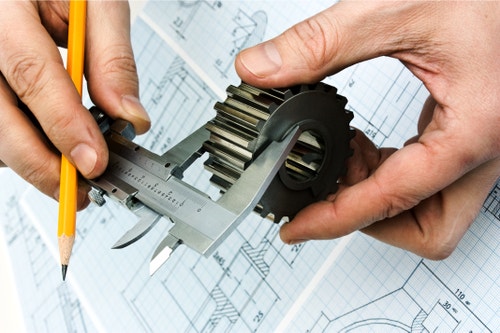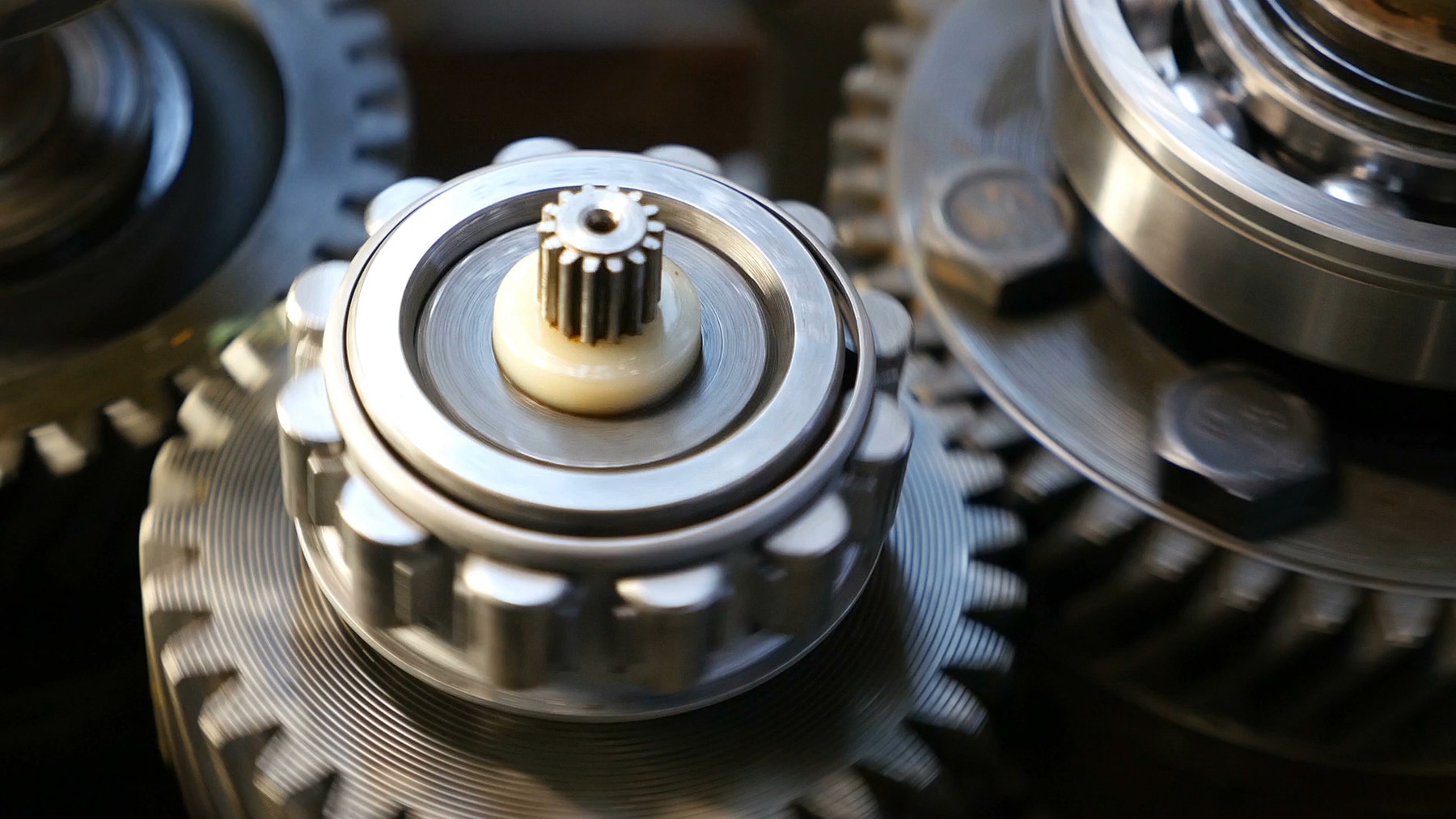Trial and Error
Build a Bevel Bot and try to drive exactly 1 meter.

Lesson plan
1. Prepare
- Read through the student material in the EV3 Classroom App.
- Collect some information about the processes and procedures that are used by engineers and physicists.
- You’ll need a measuring tape and markers for this lesson.
- If you feel it’s needed, plan a lesson using the “getting started” activities in the app. This will help familiarize your students with LEGO® MINDSTORMS® Education EV3.
2. Engage (10 Min.)
- Watch the unit video and use the ideas in the Ignite a Discussion section below to engage your students in a discussion related to this unit and lesson.
- Split your class into pairs.
3. Explore (15 Min.)
- Have each pair of students build the Bevel Bot.
- Give them some time to do a test run to ensure that the model is built correctly and works as expected.
4. Explain (10 Min.)
- Have each team perform the experiments, and record their results.
- Make sure they can create their own testing tables.
- Challenge your students to make small adjustments to the robot’s program and design so that it moves the 100 cm more accurately.
5. Elaborate (10 Min.)
- Have your students analyze which adjustments resulted in the lowest error.
- Ask each team to briefly summarize the results of their experiments.
- Don’t forget to leave some time for cleanup.
6. Evaluate
- Give feedback on each student’s performance.
- You can use the assessment rubrics provided to simplify the process.
Ignite a Discussion
No machine is perfect. Engineers do their best to make them as precise and accurate as possible, but there will always be some degree of error. Although a machine’s specifications are typically based on calculations and simulations, a physical machine must always be tested in the lab. The machine’s performance can be optimized through testing, iterations, and some trial and error.

Watch the unit video, and start a discussion about the processes used by engineers. Ask relevant questions, like:
- How do engineers work when developing new machines?
- How can they set up experiments to measure a machine’s performance?
- What factors determine the amount of error that’s acceptable and whether the machine’s performance is good enough?
Building Tips
Building Instructions
Using the Model
Place the model on a solid and level surface and mark its starting position. Run the program and mark the finishing position once it’s stopped moving. The calculated motor rotations, the actual motor rotations, and the calculated distance traveled (in cm) are shown on the Display.
Running the Experiment
As they’re running their experiments, remind your students of the following:
- The calculated motor rotations, the actual motor rotations, and the calculated distance traveled (in cm) will be shown on the Display.
- Use a measuring tape to measure the actual distance traveled.
- Record the experiment number, calculated distance traveled, and measured distance traveled in a testing table. Make sure to leave enough space for additional columns for further calculations.
- Perform the experiment at least three times and use the average values to ensure the most reliable results.
Coding Tips
Program

Differentiation
Simplify this lesson by:
- Working with your students to help them analyze the impact of the speed parameter on the amount of error
Take this lesson to the next level by:
- Explaining the significance of average values (e.g., arithmetic mean versus the median, susceptibility to outliers) that can be used to equalize the measurement errors across a series of experiments
- Encouraging your students to improve the design of their robots to further improve their accuracy and precision
Assessment Opportunities
Teacher Observation Checklist
Create a scale that matches your needs, for example:
- Partially accomplished
- Fully accomplished
- Overachieved
Use the following success criteria to evaluate your students’ progress:
- Students identified aspects of the robot’s design or program that caused inaccuracies or imprecisions.
- Students identified external factors that had an impact on the robot’s accuracy and precision.
- Students successfully reduced the error (i.e., the deviation from the expected or desired outcome) by implementing changes to the robot’s design or program.
Self-Assessment
Have each student choose the level that they feel best represents their performance.
- Bronze: I’ve performed the experiments but didn’t identify any aspects of the robot’s design or program that caused inaccuracies or imprecisions.
- Silver: With some help, I’ve identified aspects of the robot’s design or program that caused inaccuracies or imprecisions.
- Gold: I’ve identified aspects of the robot’s design or program that caused inaccuracies or imprecisions and I’ve made changes that improved its accuracy and precision.
- Platinum: I’ve identified aspects of the robot’s design or program that caused inaccuracies and imprecisions, and I’ve made changes that improved its accuracy and precision. I’ve also identified external factors that impact the robot’s accuracy and precision.

Language Arts Extension
To integrate language arts skills development, have your students:
- Create a brief report focusing on the results of their experiments and real-world examples of when accuracy and precision are critical
- Create a presentation explaining the results of their experiments and what they’ve learned
Note: This will make for a longer lesson.
Career Links
Students who enjoyed this lesson might be interested in exploring these career pathways:
- Manufacturing and Engineering (Pre-Engineering)
- Science, Technology, Engineering & Mathematics (Science and Math)
Apoyo docente
Students will:
- Learn which aspects of a robot’s design and program are causing inaccuracies and imprecisions
LEGO® MINDSTORMS® Education EV3 Core Set
EV3 Classroom App
A measuring tape
Markers
NGSS
MS-ETS1-4
Develop a model to generate data for iterative testing and modification of a proposed object, tool, or process such that an optimal design can be achieved.
Common Core
CCSS.ELA-LITERACY.RST.6-8.3
Follow precisely a multistep procedure when carrying out experiments, taking measurements, or performing technical tasks.
CCSS.ELA-LITERACY.RST.6-8.4
Determine the meaning of symbols, key terms, and other domain-specific words and phrases as they are used in a specific scientific or technical context relevant to grades 6-8 texts and topics.
CCSS.ELA-LITERACY.WHST.6-8.7
Conduct short research projects to answer a question (including a self-generated question), drawing on several sources and generating additional related, focused questions that allow for multiple avenues of exploration.
ISTE
7C
Students contribute constructively to project teams, assuming various roles and responsibilities to work effectively toward a common goal.
Material para los estudiantes
HOJA DE TRABAJO PARA EL ALUMNO
Descargar, consultar o repartir como una página HTML online o como PDF para imprimir.




